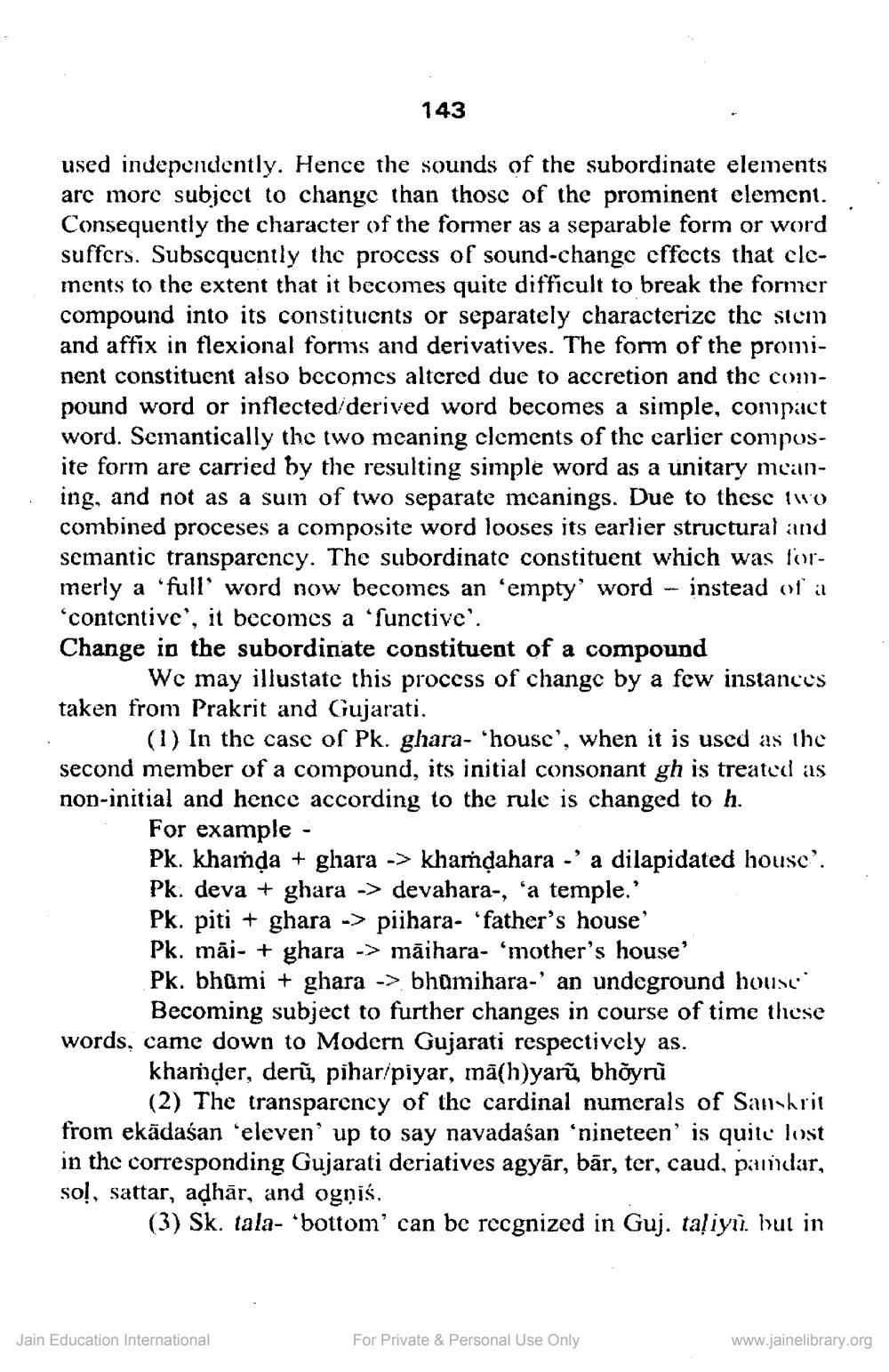________________
143
used independently. Hence the sounds of the subordinate elements are more subject to change than those of the prominent element. Consequently the character of the former as a separable form or word suffers. Subsequently the process of sound-change effects that elements to the extent that it becomes quite difficult to break the former compound into its constituents or separately characterize the stem and affix in flexional forms and derivatives. The form of the prominent constituent also becomes altered due to accretion and the compound word or inflected/derived word becomes a simple, compact word. Semantically the two meaning clements of the earlier composite form are carried by the resulting simple word as a unitary meaning, and not as a sum of two separate meanings. Due to these two combined proceses a composite word looses its earlier structural and semantic transparency. The subordinate constituent which was formerly a 'full' word now becomes an 'empty' word instead of a 'contentive', it becomes a 'functive'. Change in the subordinate constituent of a compound We may illustate this process of change by a few instances taken from Prakrit and Gujarati.
(1) In the case of Pk. ghara- 'house', when it is used as the second member of a compound, its initial consonant gh is treated as non-initial and hence according to the rule is changed to h.
For example
Pk. khamḍa ghara -> khamḍahara -' a dilapidated house'. Pk. deva ghara -> devahara-, 'a temple.' Pk. piti ghara -> piihara- 'father's house'
Pk. mai- + ghara -> māihara- 'mother's house'
Pk. bhumi + ghara -> bhumihara-' an undeground house Becoming subject to further changes in course of time these words, came down to Modern Gujarati respectively as.
khamḍer, deru, pihar/piyar, mā(h)yarũ, bhoyrû
(2) The transparency of the cardinal numerals of Sanskrit from ekādasan 'eleven' up to say navadaśan 'nineteen' is quite lost in the corresponding Gujarati deriatives agyār, bär, ter, caud, pamdar, sol, sattar, adhār, and ogniś.
(3) Sk. tala- 'bottom' can be recgnized in Guj. taliyù. but in
Jain Education International
For Private & Personal Use Only
www.jainelibrary.org




